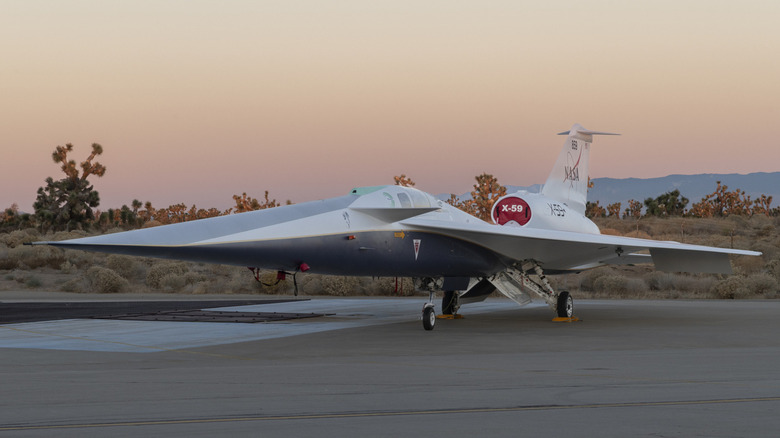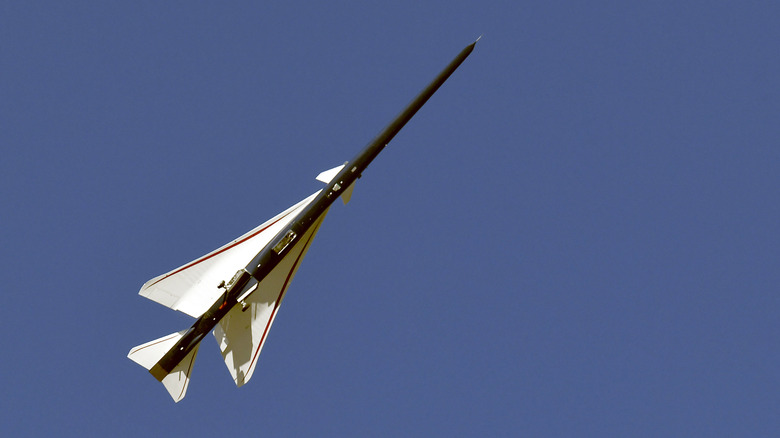NASA's X-59 Supersonic Jet Broke The Sound Barrier On Its First Test Flight
The "quiet" supersonic aircraft developed by NASA and Lockheed Martin has completed its first flight in California. Dubbed the X-59 Quiet SuperSonic Technology Aircraft, or Quesst, it is a sleek experimental jet designed to break the sound barrier without the noise of a "sonic boom." According to Lockheed Martin, the X-59 "performed exactly as planned," during its first flight between US Air Force Plant 42 in Palmdale and the NASA Armstrong Flight Research Center in Edwards — a flight distance of about 26 miles. The X-59 is designed to break the sound barrier quietly and optimize supersonic flights for commercial use in the future.
NASA gave Lockheed Martin approval to begin work on the X-59 in 2018 with original testing planned for 2021. The first test flight didn't occur until October, 2025, but it was deemed an all-around success. The goal is to make commercial supersonic flight a possibility. Back in 1973, supersonic flights were banned because of the loud boom created by breaking the sound barrier — officials were concerned it would cause property damage and noise pollution. In 2025, however, President Trump removed the ban with an executive order. And according to NASA, the X-59 should only produce a sonic "thump" when passing overhead.
What's next for the X-59 Quesst?
As part of the Quesst mission, NASA will be flying the X-59 over U.S. communities and gathering data on how people on the ground react. NASA has already tested "quiet" sonic booms over Texas with an F/A-18 aircraft. As well, NASA and Lockheed Martin have been working to improve public sentiment around supersonic flights, noting that "airport noise, emissions, and climate impact are all factors that still need to be addressed."
The jet itself measures 94 feet long, has a wingspan of 29.5 feet, and is propelled by a General Electric F414 engine. It's capable of reaching a maximum speed of Mach 1.5 or approximately 990 mph, with cruising speeds around Mach 1.42 or 940 mph. It features a flush cockpit with a long pointed nose-cone and no forward-facing window. To see, the pilots use a 4K resolution monitor along with a traditional canopy window. If you're curious, NASA also developed an "air-to-air" photographic technique in 2019 to show what a sonic boom looks like.

